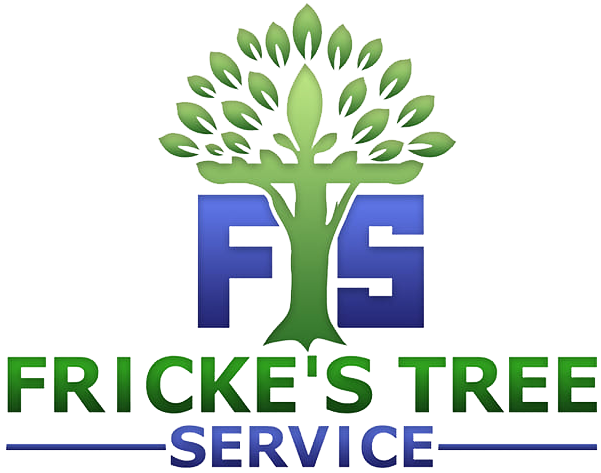Fricke's Tree Service
Why Overgrown Trees Pose a Risk to Orlando's Power Lines
In the vibrant city of Orlando, where lush greenery meets urban living, the beauty of overgrown trees can often mask a hidden danger. While trees are essential for our environment, providing shade and improving air quality, their unchecked growth can pose significant risks, particularly to power lines. Understanding why overgrown trees are a concern is crucial for residents and city planners alike, as it impacts safety, power reliability, and the overall health of our urban ecosystem.
The Relationship Between Trees and Power Lines
Power lines are a vital part of our infrastructure, delivering electricity to homes and businesses. However, when trees grow too close to these lines, the consequences can be severe. Here are some key points to consider:- Electrical Hazards: Overgrown branches can come into contact with power lines, leading to short circuits, power outages, and even fires. This can create dangerous situations for both residents and utility workers.
- Service Interruptions: During storms or high winds, branches can break off and fall onto power lines, causing widespread outages. Such interruptions can disrupt daily life and impact local businesses, leading to economic losses.
- Increased Maintenance Costs: Utility companies often spend significant resources on tree trimming and maintenance to prevent these issues. These costs can ultimately be passed on to consumers through higher utility rates.
Why Trees Grow Near Power Lines
Several factors contribute to the growth of trees near power lines:- Natural Growth Patterns: Trees naturally grow towards sunlight, which can lead them to encroach on power lines. This tendency is particularly pronounced in species that grow rapidly in urban environments.
- Urban Planning Oversights: In some cases, trees are planted too close to power lines without considering their mature size. This oversight can result from a lack of foresight in urban planning and landscaping decisions.
- Climate and Soil Conditions: Favorable growing conditions in Orlando, including ample rainfall and rich soil, can lead to rapid tree growth, exacerbating the issue. The warm climate encourages vigorous growth, making it essential to monitor tree health and positioning.
Identifying Overgrown Trees
Recognizing overgrown trees is essential for preventing risks associated with power lines. Here are some signs to look for:- Branches Touching Power Lines: Any branch that makes contact with a power line should be addressed immediately. This is a clear indication that the tree poses a risk to electrical safety.
- Excessive Leaf Growth: Trees with dense foliage can obstruct power lines, especially during storms. This can lead to increased resistance and potential outages.
- Tree Leaning Towards Lines: A tree that leans towards power lines is at a higher risk of causing damage. This can be a sign of instability or disease, necessitating immediate attention.
Risks of Overgrown Trees
The risks associated with overgrown trees extend beyond just power outages. Here are some potential dangers:- Fire Hazards: Trees in contact with power lines can ignite, leading to wildfires, especially in dry conditions. This poses a significant threat to both property and human life.
- Property Damage: Falling branches can damage homes, vehicles, and other property. The financial implications of such damage can be substantial, leading to costly repairs and insurance claims.
- Injury Risks: Individuals near overgrown trees are at risk of injury from falling branches or electrical hazards. This risk is particularly high during storms or high winds when branches are more likely to break.
Preventive Measures
To mitigate the risks posed by overgrown trees, several preventive measures can be taken:- Regular Inspections: Homeowners should regularly inspect trees on their property for signs of overgrowth. This proactive approach can help identify potential hazards before they become serious issues.
- Professional Tree Trimming: Hiring professionals to trim trees can ensure safe distances from power lines. Certified arborists can assess tree health and provide appropriate care to maintain safety.
- Community Awareness Programs: Educating the community about the importance of tree maintenance can foster proactive measures. Workshops and informational sessions can empower residents to take action.
Utility Company Responsibilities
Utility companies play a crucial role in managing the risks associated with overgrown trees. Their responsibilities include:- Regular Tree Assessments: Conducting routine assessments of trees near power lines to identify potential hazards. This ongoing monitoring is essential for maintaining safety and reliability.
- Trimming Services: Offering trimming services to homeowners to maintain safe distances from power lines. This service can help prevent dangerous situations and reduce the risk of outages.
- Emergency Response: Responding quickly to downed lines and tree-related incidents to restore power and ensure safety. A swift response can minimize disruption and protect public safety.
Community Involvement
Community involvement is essential in addressing the issue of overgrown trees. Here are ways residents can contribute:- Reporting Hazards: Residents should report any overgrown trees or branches touching power lines to local authorities. This can help ensure timely action is taken to mitigate risks.
- Participating in Tree Planting Events: Engaging in community tree planting can promote responsible planting practices. This fosters a culture of care and responsibility towards urban forestry.
- Advocating for Urban Forestry Programs: Supporting local initiatives that focus on sustainable tree management can benefit the community. Advocacy can lead to better policies and practices that prioritize safety and environmental health.
Conclusion
Overgrown trees pose a significant risk to Orlando's power lines, impacting safety and reliability. By understanding the relationship between trees and power lines, recognizing the signs of overgrowth, and taking preventive measures, residents can help mitigate these risks. Collaboration between homeowners, utility companies, and the community is essential to ensure a safe and sustainable urban environment. Together, we can create a harmonious balance between nature and infrastructure, ensuring that our city remains vibrant and safe for all its residents.SHARE POST
RECENT POSTS
Interested in Our Services?
Get in touch today to discuss your next project and we will happy to answer any questions and provide you with a no-obligation FREE Estimate.







